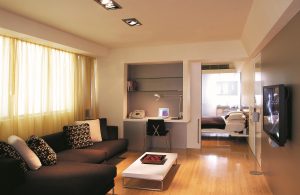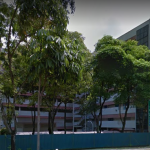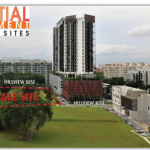The Government has to do more to ensure buyers’ interest for purchasing new properties.
A writer to the Straits Times (ST) in pointing out that Singapore property market is an oligopoly with just a few big players offering similar products, said that there were no real choices when it comes to purchasing new properties.
Table of Contents
The letter-writer, Hong Chee Meng, said that developers have compromised on the sizes of flats in order to make good profits while keeping overall apartment prices affordable. She noted that sizes of flats have suffered, shrinking drastically from just 10 years ago.
“Three-bedroom apartments have shrank from an average of 1,200 sq ft to just 900 sq ft now, while two-bedroom apartments have declined from 800 sq ft to 600 sq ft or less,” Hong added.

Hong echoed similar sentiments of other letter writers to ST who asked the Government to intervene to better protect buyers purchasing new properties Another writer, Paul Chan Poh Hoi, said that it is important for the Government to “mandate that 70 sq m be the minimum size of a unit, and that such units should not make up more than 35 per cent of the units in a development.”
He added:“half of the 309 units in the Margaret Ville condominium are around 65 sq m or smaller,” and that in “The Tapestry, over 500 of the 861 units are 65 sq m or smaller.”
One more letter writer to the same newspaper agreed with Paul’s call for better protection for buyers purchasing new properties and said that housing is the biggest advantage Singapore has over Hong Kong.
This letter-writer, Kwok So Ha, had lived in Hong Kong for 20 years, in a 42 sq m flat. Kwok said that the tiny flat hardly provided any free space for family members to move around, and that the cramped space made one feel stressed.
Kwok bought a 103 sq m resale HDB flat in Singapore with her husband in 2016 for less than $350,000, and said that she was “terrified at the idea of having shoebox units in Singapore.”
She added: “I do not want my children to live in shoebox units or units less than 70 sq m. The trend does not bode well for our city. We should not shrink our living spaces further.”
Hong Kong has been faulted for not protecting the rights of its people to have better options for affordable housing, and has instead protected the interests of profit-driven property developers.
Hong too agreed that the “way of Hong Kong, with its pigeonhole houses, is definitely not where we want to go.” He strongly urged the “Urban Redevelopment Authority to look into addressing this undesirable situation urgently,” for buyers purchasing new properties.
The URA has mandated a minimum average size of 70 sq m per unit in a development for projects outside of the Central area. URA’s guideline does not prescribe the minimum unit size, but instead proposes that the building gross floor area divided by 70 sq m to compute the maximum number of units allowed per development. URA’s rule is meant to prevent overcrowding in a development, particularly those made up of a large number of shoebox units.
Members of the public have pointed out that URA’s formula “emphasises only the “average” of an aggregate of sizes per development, but fails to mandate 70 sq m as the size for a shoebox unit or to restrict the number of such units allowed,” and that “smart developers can circumvent the formula and maximise profits by designing apartments of various sizes, which will then meet the “average” requirement.”
https://www.icompareloan.com/resources/enbloc-sales-huge-property-supply/
Members of the public have advocated that shrinking apartments and shoebox units benefit no one except property developers, who stand to make more money.
A prominent finance commentator, Ryan Ong, suggested that shoebox units are”just a plot by psychiatrists to drum up business for claustrophobia treatment.”
He added: “Some of these units, such as The Ebony (Lorong Marican) and Royce Residences (Geylang), are in the range of 300 to 400 square feet.”
Apart from being tiny, the other distinguishing trait of a shoebox is a stupidly high price per square foot. For example, City Suites at Balestier Road has shoebox units which range between $1,600 to $1,700 psf. 26 Newton has units that go for upward of $2,500 psf. This means that at around 474 square feet, you can end up paying $1.2 million for purchasing new properties which is smaller than a 3-room flat.
And shoebox units are not really rare. In 2013, there were about 9,600 shoebox units in Singapore. In 2015, analysts were predicting a bumper crop of shoebox units (an estimated 1,985 units) to hit the market. One only needs to do a cursory search on listings site to see how many such units are available for sale.
But not all banks like shoebox units and may not provide home loans for purchasing new properties. But this has not stopped developers from building even smaller units at higher psf, which in turn leads to a lot of premature investing in shoebox units.
Some experts have however suggested that with disruptive technology like Food Panda and Deliveroo, the younger generation may not find a need to cook, making way for tiny shoebox units. The changing demographic trends of smaller family units, more singles and an ageing population, may also pave the way for shoebox units to find more acceptance here.
But as of now, the consensus seems to be that our living spaces should not shrink further and that the trend of shoebox units does not bode well for our city.
—
If you are home-hunting, our Panel of Property agents and the mortgage consultants at icompareloan.com can help you with affordability assessment and a promotional home loan. Just email our chief mortgage consultant, Paul Ho, with your name, email and phone number at paul@icompareloan.com.






